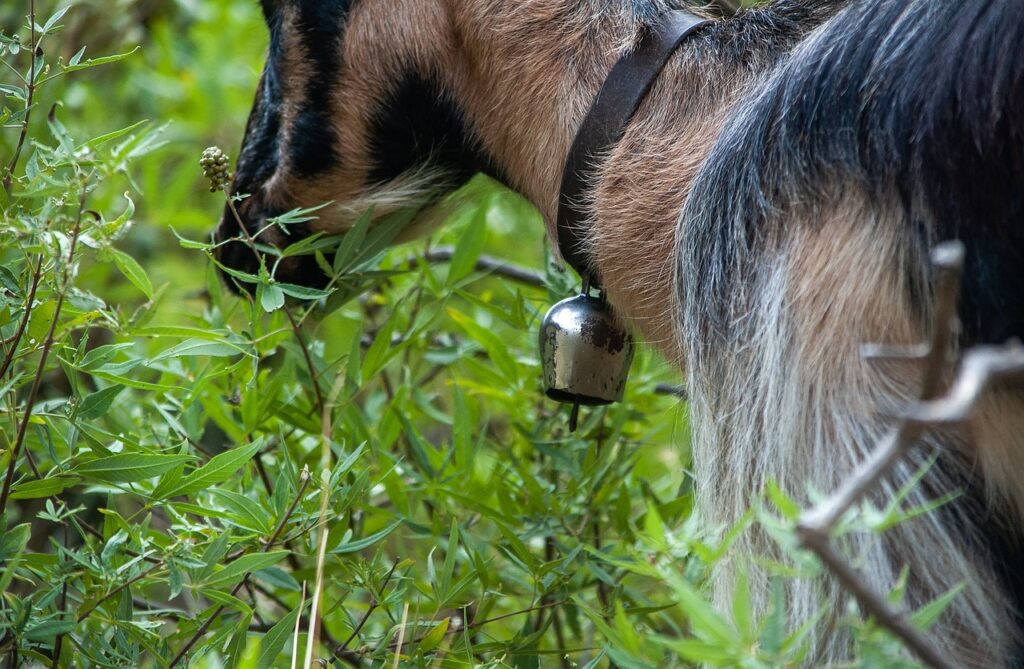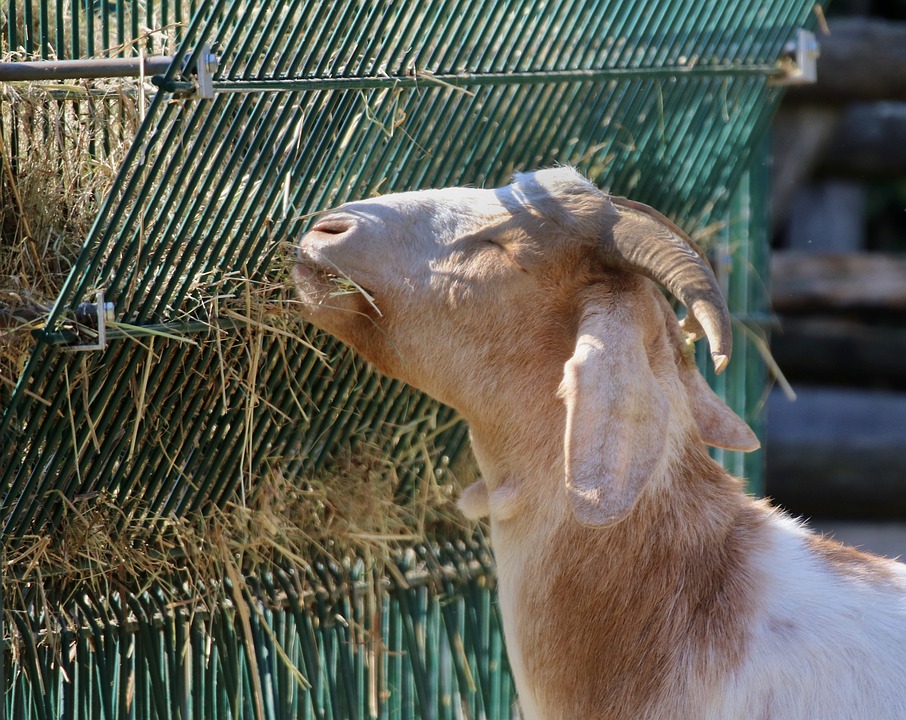Goats are notorious nibblers, with a seemingly endless appetite for various plants and foliage. But can they safely munch on the beautiful leaves of a magnolia tree? The answer, like many things in the world of goat care, is a nuanced one. While magnolia leaves aren’t inherently toxic to goats, there are some factors to consider before letting your furry friend indulge in this leafy treat. This guide will explore the benefits and potential drawbacks of feeding magnolia leaves to your goats, along with tips on responsible feeding practices and creating a well-rounded diet.
The Benefits Of Eating Magnolia Leaves
Magnolias, with their large, glossy leaves, might seem like an uninteresting option for goats. However, these broad beauties offer a surprising array of potential benefits for your caprine companions:
- Dietary Fiber: Magnolias provide a good source of dietary fiber, crucial for maintaining healthy digestion in goats. Fiber helps regulate gut motility, preventing constipation and promoting a balanced gut microbiome.
- Essential Minerals: Magnolia leaves contain essential minerals like magnesium, calcium, and potassium. These minerals play vital roles in bone development, muscle function, and overall health for your goats.
- Vitamin C Boost: These leaves offer a natural source of Vitamin C, an essential vitamin for goats. Vitamin C supports the immune system, helps with wound healing, and maintains healthy skin and coat.
- Natural De-Wormer (anecdotally): Some goat owners have reported anecdotal success using magnolia leaves as a natural de-wormer. However, more research is required to confirm this benefit, and consulting a veterinarian remains the best course of action for addressing worm issues.
- Variety in Diet: Offering a variety of browse options keeps your goats mentally stimulated and engaged with their environment. Magnolia leaves, when introduced responsibly, can add some interesting variety to their usual grazing routine.

Things To Watch Out For When Feeding Magnolia Leaves
While magnolia leaves offer some potential benefits, there are also a few things to keep in mind before introducing them to your goats’ diet:
- Limited Knowledge on Toxicity: There isn’t extensive research on the potential toxicity of magnolia leaves in goats. While no known toxins are present, it’s always best to err on the side of caution.
- Leaf Type Matters: There are over 200 species of magnolia trees. While generally considered safe, some magnolia varieties might have unknown properties. Identify the specific type of magnolia you have before offering leaves to your goats.
- Avoid Overconsumption: Like any new food, introducing magnolia leaves should be done gradually. Overconsumption can lead to digestive upset in goats.
- Pesticide Concerns: If your magnolia tree has been treated with pesticides or herbicides, the leaves are absolutely off-limits for your goats. These chemicals can be harmful if ingested.
- Potential for Choking: Magnolias have large leaves that can pose a choking hazard for young or smaller goats. Ensure the leaves are broken down into manageable pieces before offering them.
How Often Should You Feed Your Goats Magnolia Leaves?
Magnolias should be considered a supplementary treat, not a staple food source for your goats. Here’s how to incorporate them responsibly:
- Start Slow: Begin by introducing a small amount of chopped magnolia leaves, observing your goats for any signs of digestive discomfort.
- Limit Intake: Once they’ve adjusted, magnolia leaves can be offered occasionally as a treat, not exceeding 10% of their overall diet.
- Monitor Behavior: Keep an eye on your goats after consuming magnolia leaves. Watch for signs of diarrhea, bloating, or lethargy, which may indicate digestive issues.
- Prioritize Hay and Pasture: A high-quality hay and fresh pasture should form the foundation of your goats’ diet. Magnolia leaves should be viewed as a occasional enrichment experience.

How To Prepare Magnolia Leaves When Feeding Your Pet Goat
Here’s how to ensure safe and enjoyable magnolia leaf consumption for your goats:
- Fresh is Best: Offer only fresh, green magnolia leaves. Avoid wilted, discolored, or moldy leaves.
- Wash Them Up: While not essential, you can rinse the leaves with clean water to remove any dirt or debris.
- Chop It Up: Large leaves can be a choking hazard. Chop the leaves into bite-sized pieces, especially for younger or smaller goats.
- Remove Twigs and Seeds: Large twigs and magnolia seeds can be difficult for goats to digest. Remove them before offering the leaves.
- Offer in a Designated Area: Provide the leaves in a designated feeding area to avoid them from consuming potentially harmful plants growing near the magnolia tree.
Can Baby Goats Eat Magnolia Leaves?
Due to the potential choking hazard and the lack of extensive research on the effects on young goats, it’s best to avoid feeding magnolia leaves to kids (baby goats) under 6 months old. Their digestive systems are still developing, and they might not be able to handle the leaves as effectively as adult goats. Here are some safer alternatives for young goats:
- High-Quality Hay: Focus on providing a nutritious, readily available source of hay specifically formulated for young goats.
- Fresh Browse: Offer a variety of safe and age-appropriate browse options like tender grass clippings, raspberry bushes (in moderation), or willow branches.
- Goat Pellets: Consider incorporating commercially produced goat pellets specifically designed for growing kids. These provide essential nutrients for healthy development.
- Fresh Water: Ensure a constant supply of clean, fresh water for your baby goats. Hydration is crucial for their growth and well-being.
What Other Foods Can Goats Eat?
Goats are browsers, meaning they enjoy a diverse diet of various plants and foliage. Here are some safe and healthy options to consider alongside magnolia leaves (offered occasionally):
- Hay: This forms the base of a goat’s diet. Choose good quality hay rich in fiber and nutrients.
- Pasture: Fresh pasture provides essential nutrients and allows for natural grazing behaviors. Ensure the pasture is free of harmful plants or pesticides.
- Browse: Offer a variety of safe browse options like blackberry bushes (in moderation), shrubs, tree leaves from approved trees (apple, willow), and weeds like dandelions.
- Fruits and Vegetables: Goats can enjoy occasional treats like apples, pears, carrots, or pumpkins (in moderation). Avoid citrus fruits and avocado.
- Grains: Grains like oats or barley can be offered in small quantities as a source of energy. However, overconsumption can lead to digestive issues.

How To Give Your Goat A Healthy And Balanced Diet
Creating a balanced diet for your goats is essential for their overall health and well-being. Here are some key strategies:
- Know Your Goats: Consider factors like age, breed, activity level, and pregnancy status when planning their diet.
- Quality Hay is Key: Always provide a constant supply of high-quality hay suitable for their needs.
- Variety is Important: Offer a variety of safe browse options to keep your goats engaged and provide essential nutrients.
- Gradual Changes: Introduce any new food slowly to allow their digestive system to adjust.
- Monitor Their Intake: Observe your goats’ eating habits and adjust the amount of food offered based on their individual needs.
- Fresh Water is Essential: Ensure a constant supply of clean, fresh water at all times.
- Consult a Veterinarian: For specific dietary advice or if you have any concerns, consult with a veterinarian specializing in goat care.
Bonus Enrichment for Your Goats
While magnolia leaves can be an occasional treat, there’s a whole world of enrichment options to keep your goats mentally and physically stimulated. Here are some ideas to consider:
- Foraging Fun: Confine a small section of your pasture with fencing and rotate the location periodically. This encourages natural foraging behavior and provides them with a fresh patch of land to explore.
- Climbing Challenges: Goats love to climb! Provide sturdy climbing structures like logs, rocks, or specially designed climbing platforms. This keeps them active and provides enrichment.
- Playtime with Toys: Offer safe and durable goat toys like hanging objects, puzzle feeders, or treat balls. These toys encourage problem-solving skills and provide boredom relief.
- Branch Out with Browse: Rotate the browse options you offer. Explore safe and interesting choices like maple leaves (in moderation), blueberry bushes (avoid excessive fruit intake), or grapevines (avoid leaves).
- Seasonal Treats: Offer seasonal treats like pumpkins (seeds removed) in the fall or ripe watermelons in the summer. These provide hydration and variety in their diet.
- Social Interaction: Goats are social creatures. Consider getting a companion goat for them to interact with. If that’s not an option, spend quality time with your goats through petting, grooming, or talking to them.
Keeping Safety in Mind
Remember, safety is paramount when introducing any new enrichment activity or food item. Here are some additional tips:
- Research Beforehand: Always research any new plant or object before offering it to your goats. Ensure it’s safe for them to consume or interact with.
- Start Slow: When introducing a new enrichment activity, begin gradually. Let them explore the new object or environment at their own pace.
- Supervise Playtime: Especially when introducing new toys, supervise your goats during playtime to ensure they’re using them safely.
- Remove Hazards: Check the pasture or designated enrichment area regularly for any potential hazards like poisonous plants, sharp objects, or loose fencing.
Final Verdict: Magnolia Leaves for Goats – A Treat, Not a Staple
While magnolia leaves offer some potential benefits like fiber, minerals, and variety in diet, they should be considered a supplementary treat, not a staple food source for your goats. There’s limited research on their long-term effects, and some potential risks exist. Focus on providing a well-balanced diet rich in hay, fresh pasture, and safe browse options. When offering magnolia leaves, prioritize safety by ensuring proper preparation, monitoring consumption, and limiting intake. Remember, a healthy and balanced diet is the key to keeping your furry friends happy and thriving!

